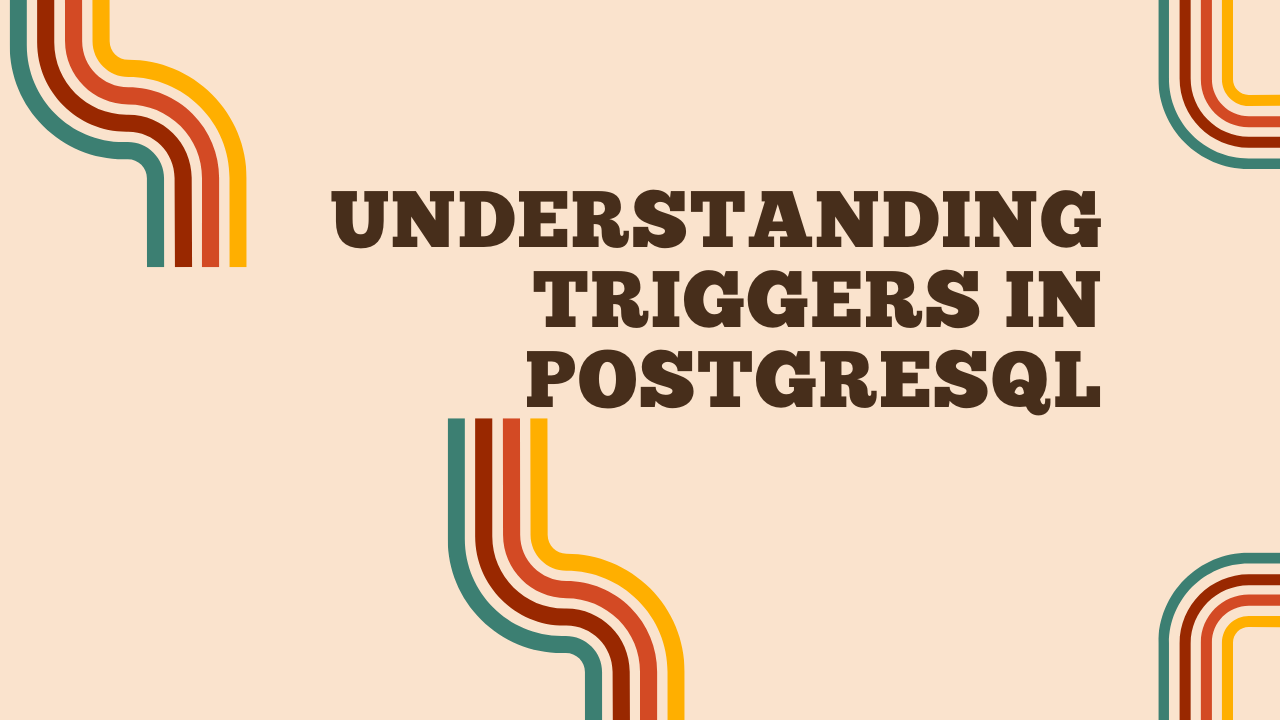Understanding and Implementing Triggers in PostgreSQL
 Mohammad Minhazul Alam
Mohammad Minhazul Alam
A PostgreSQL trigger is a mechanism that automatically initiates a predefined action when a specific event occurs, such as inserting, updating, or deleting data in a table. Triggers enhance database functionality by enforcing rules, maintaining data integrity, and automating tasks, thereby reducing manual intervention and ensuring consistency in data operations.
Task: Student Grade Update Trigger
In an application, we have a database that manages students and their grades for different courses. We want to implement a trigger that automatically updates a student's GPA whenever a new grade is inserted or an existing grade is updated.

Database Schema
We'll have two tables: students and grades.
students table:
student_id(Primary Key)student_namegpa
grades table:
grade_id(Primary Key)student_id(Foreign Key)course_namegrade(value from 0 to 4)
Setting up PostgreSQL using Docker
Setting up PostgreSQL using Docker is a straightforward process. Docker allows you to run PostgreSQL in a container, which is isolated from your host environment.
Run the PostgreSQL Container
Run a PostgreSQL container with the following command. This will create and start a new container instance with PostgreSQL running inside it.
docker run --name my-postgres -e POSTGRES_PASSWORD=mypassword -d -p 5432:5432 postgres
--name my-postgres: Names the containermy-postgres.-e POSTGRES_PASSWORD=mypassword: Sets the environment variablePOSTGRES_PASSWORDtomypassword. This is the password for the default PostgreSQL userpostgres.-d: Runs the container in detached mode (in the background).-p 5432:5432: Maps port 5432 on your host to port 5432 on the container. This allows you to connect to PostgreSQL onlocalhost:5432.postgres: Specifies the image to use.
Verify the PostgreSQL Container is Running
To verify that the PostgreSQL container is running, use the following command:
docker ps
You should see an entry for the my-postgres container with the status Up.
Connect to PostgreSQL
You can connect to the PostgreSQL instance using a PostgreSQL client such as psql, pgAdmin, or any other database management tool.
Using psql from another Docker container
docker run -it --rm --network host postgres psql -h localhost -U postgres
-it: Runs the container in interactive mode with a TTY.--rm: Removes the container after it exits.--network host: Uses the host network.postgres: Specifies the image to use.psql -hlocalhost-U postgres: Connects to PostgreSQL on localhost with the userpostgres.
You will be prompted to enter the password (mypassword).
Create the Database
Once connected, you can create the my_db database by running the following SQL command:
CREATE DATABASE my_db;
You can see the created database using the following command:
\l
To switch to the newly created database and start using it:
Using psql:
\c my_db
Steps to Create the Trigger
Create the Tables: Define the
studentsandgradestables.Create the Trigger Function: Write a function that calculates the GPA whenever a grade is inserted or updated.
Create the Trigger: Define the trigger that calls the function on insert or update the
gradestable.
Step-by-Step Solution
1. Create the Tables
students: This table holds the student's ID, name, and GPA.grades: This table records the grades each student receives for different courses.
CREATE TABLE students (
student_id SERIAL PRIMARY KEY,
student_name VARCHAR(100) NOT NULL,
gpa NUMERIC(3, 2)
);
CREATE TABLE grades (
grade_id SERIAL PRIMARY KEY,
student_id INTEGER NOT NULL REFERENCES students(student_id),
course_name VARCHAR(100) NOT NULL,
grade NUMERIC(2, 1) CHECK (grade >= 0 AND grade <= 4)
);
You can see the created tables using the following command:
\dt
2. Create the Trigger Function
CREATE OR REPLACE FUNCTION update_student_gpa()
RETURNS TRIGGER AS $$
BEGIN
-- Calculate the new GPA
UPDATE students
SET gpa = (
SELECT ROUND(AVG(grade), 2)
FROM grades
WHERE student_id = NEW.student_id
)
WHERE student_id = NEW.student_id;
RETURN NEW;
END;
$$ LANGUAGE plpgsql;
Explanation:
CREATE OR REPLACE FUNCTION update_student_gpa(): Defines a function namedupdate_student_gpa.RETURNS TRIGGER AS $$ ... $$ LANGUAGE plpgsql;: Specifies that the function is a trigger and uses the PL/pgSQL language.BEGIN ... END;: The block where the actual logic resides.Inside the function, we update the
studentstable:We set the
gpafield to the rounded average of all grades for the student specified in theNEWrecord.NEW.student_id: References thestudent_idof the record that triggered the function.ROUND(AVG(grade), 2): Calculates the average grade to two decimal places.
3. Create the Trigger
CREATE TRIGGER gpa_update
AFTER INSERT OR UPDATE ON grades
FOR EACH ROW
EXECUTE FUNCTION update_student_gpa();
Explanation:
CREATE TRIGGER gpa_update: Defines a trigger namedgpa_update.AFTER INSERT OR UPDATE ON grades: Specifies that the trigger should fire after an insert or update operation on thegradestable.FOR EACH ROW: Ensures the trigger fires once for each row affected by the insert or update operation.EXECUTE FUNCTION update_student_gpa(): Specifies the function to execute when the trigger fires.
Testing the Trigger
- Insert a Student:
INSERT INTO students (student_name) VALUES ('John Doe');
- Insert Grades:
INSERT INTO grades (student_id, course_name, grade) VALUES (1, 'Math', 3.5);
INSERT INTO grades (student_id, course_name, grade) VALUES (1, 'Science', 4.0);
- Check the GPA:
SELECT * FROM students WHERE student_id = 1;
Expected output:
| student_id | student_name | gpa |
| 1 | John Doe | 3.75 |
The GPA is correctly calculated as the average of the grades 3.5 and 4.0.
- Update a Grade:
UPDATE grades SET grade = 3.0 WHERE grade_id = 1;
- Check the GPA Again:
SELECT * FROM students WHERE student_id = 1;
Expected output:
| student_id | student_name | gpa |
| 1 | John Doe | 3.50 |
The GPA is recalculated correctly after the grade update.
Conclusion
This hands-on guide demonstrates how to create a trigger in PostgreSQL that maintains a student's GPA automatically. This scenario is highly applicable in an environment where student grades and GPAs need to be managed efficiently.
Subscribe to my newsletter
Read articles from Mohammad Minhazul Alam directly inside your inbox. Subscribe to the newsletter, and don't miss out.
Written by
